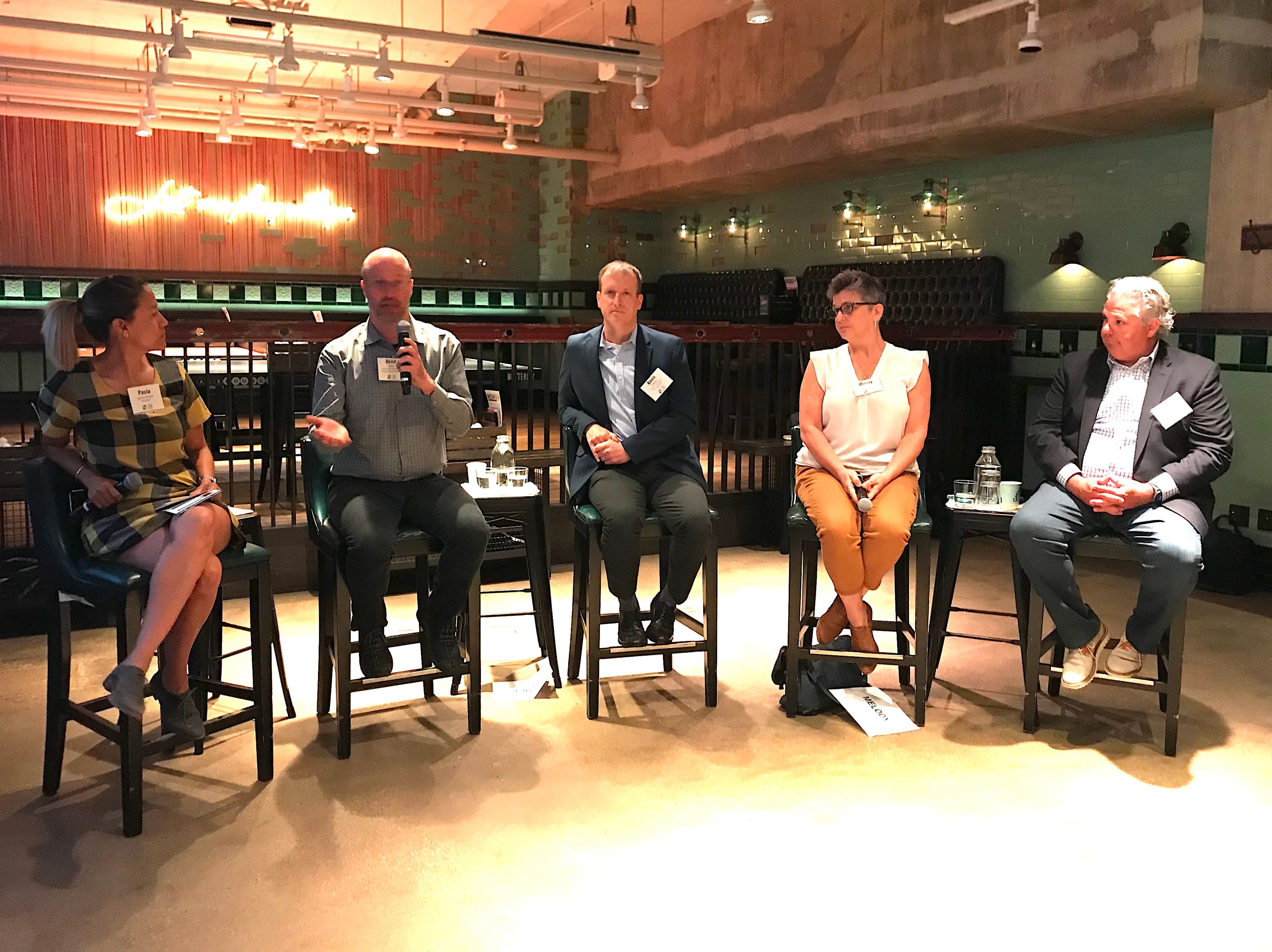Yesterday I caught the tail end of a discussion on "Mobility as a Service," part of the Chicago Loop Alliance's Downtown Future Series, which brings local leaders together to talk about emerging downtown trends and their impact on the Loop.
The talk was moderated by Paola Aguirre Serrano, the founder of the design firm Borderless, and included panelists Kevin O'Malley, managing deputy director of the Chicago Department of Transportation; Melody Geraci, interim executive director of the Active Transportation Alliance; Jerry Quandt, executive director of the Illinois Autonomous Vehicles Association; and Benet Haller, transit manager for the Cook County Department of Transportation and Highways.
At the end of the session, Serrano asked the panelists what they want to see from the future of Chicago transportation. Here's some of what they had to say.
Kevin O'Malley: I guess my vision is sort of utopian, a city where transit is supported, where we have people on bikes and other kinds of micro-mobility that feel comfortable, and all people in the city have access to transportation to easily get to jobs.
Melody Geraci: I'm not great with crystal balls, but I would say that if Active Trans and our partners and supporters had out way, but mobility would be not a service but a human and a civil right, and all people in our city would have the ability to move about their community freely, safely, and in manners that they choose, with a hierarchy that prioritizes the most vulnerable users.
Benet Haller: I definitely believe that 10 years, 15 years into the future, mass transit by rail will still be a major component of how people of the Chicago region. And I think what the area of the most change is going to be is that first half miles, maybe two-to-three-mile conclusion. And I believe the Pace shoulder-running service, that could effectively be a kind of rapid transit for the exurban and middle-ring suburban areas. It really compliments the existing Metra and CTA rail system. Rail expansions are expensive, so the shoulder-running thing is a very cost-effective way to offer a premium service.
Jerry Quandt: There is this consensus, both in the public and private sector, to develop this sort of utopian approach. For [the Illinois Autonomous Vehicles Association] it's about the very thoughtful use of technology to create a better quality of life around mobility by enhancing all these things, the same way that technology has enhanced your life in the things you do. The smartphone is a perfect example. You used to have to go over to a wall and pull a phone out to connect with somebody, and now the word is at your fingertips. Technology has made your quality of life better. Using it responsibly, and creating the systems, whether it's through policy, or the approach that we've taken of really creating principals that drive both public and private development of this technology I think is really what is critical




